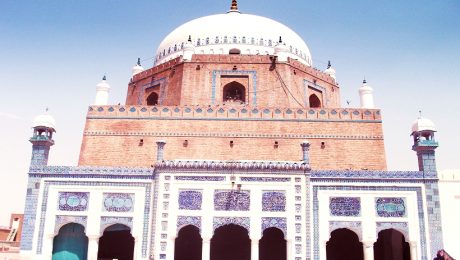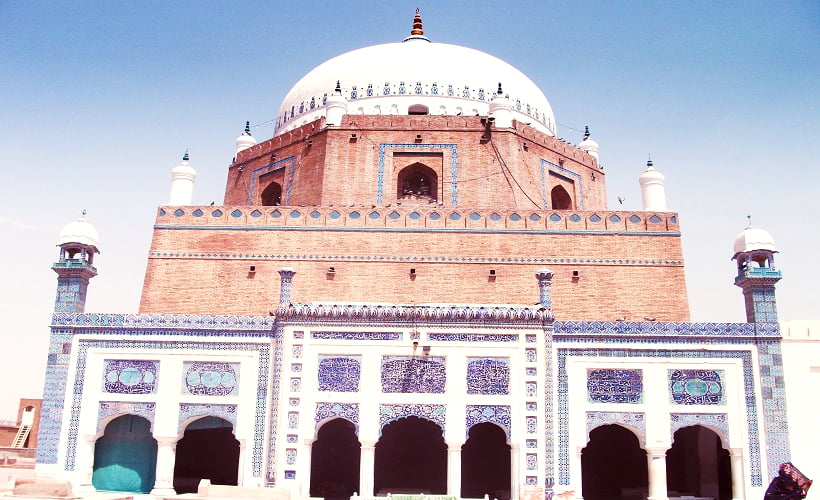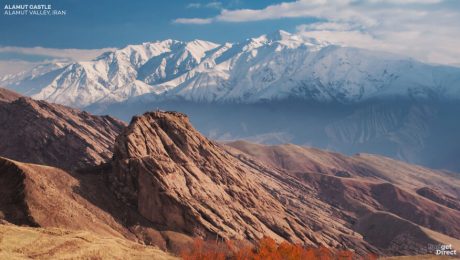5 popular historical places in Multan
Multan is Pakistan’s seventh-largest city, famous for its historic location and beautiful architecture. Due to the abundance of cemeteries in the town, Multan is also known by the masses as the “City of Saints”.
Some historians suggest that the Multan was about 2000 years old and was the center of mysterious activity. This fact makes the city much more enjoyable.
If you are interested in exploring Pakistan’s various architectural designs and have historical tips, Multan is for you. Make sure to hire the right architect to ensure sound construction and design.
This blog provides a concise and informative list of places to visit in Multan.
So sit down and enjoy a virtual tour of Multan.
Tomb of Shah Rukn e Alam

The Tomb of Shah Rukn e Alam, also known as Shah Rukn-e-Alam, is one of Multan’s most famous Sufi saints. He was a Sufi who belonged to the Sufrawardi Sufi sect.
Every year, the sanctuary is visited by more than 100,000 pilgrims from around the world.
Former Foreign Minister Shah Mehmood Qureshi is the current servant of the Nashin Carpet and Shrine.
The tomb is in the center of Multan. It was built between 1320 and 1324 AD. Historians show that the cemetery was constructed by Gassedin Toorak, the ruler of Debarpur.
In the 1970s, the cemetery was restored by the Waqf department. The tomb was restored by Kashigar in Multan. The historic brown building, adorned with blue stones, is an example of ancient Mughal architecture.
Fort of Multan
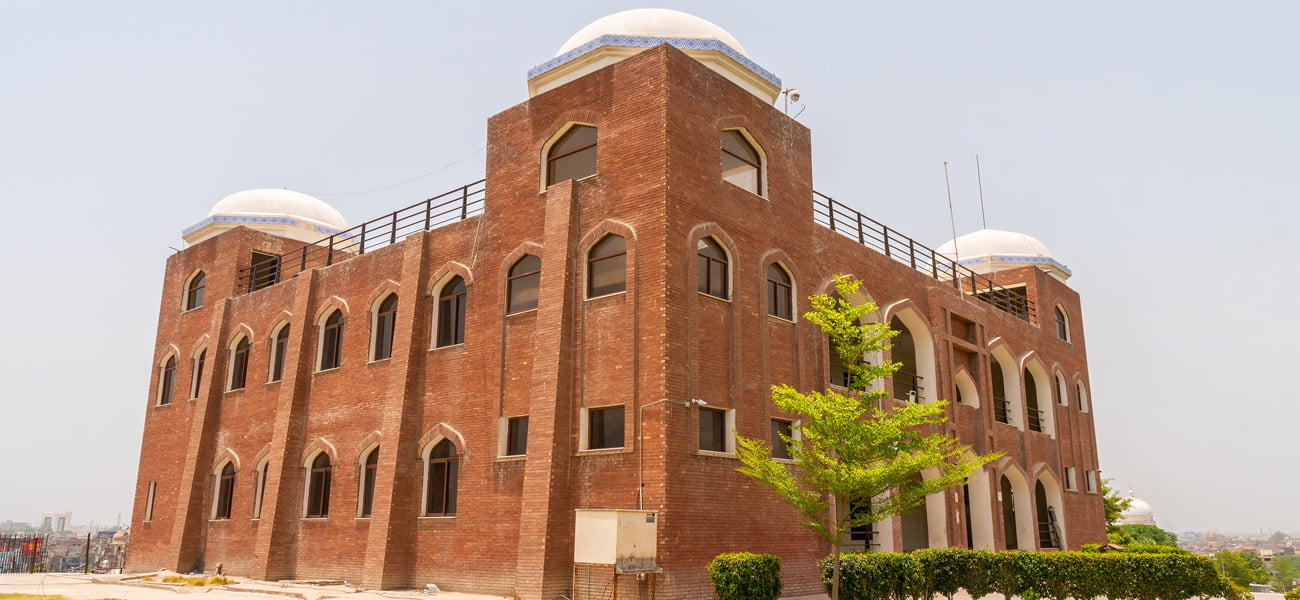
Fort of Multan is an ancient landmark of South Asian defence and architecture. Some historians suggest that the castle was built between 800 and 1000 BC. The court was created by the Catouch dynasty but was severely destroyed by the British Empire during colonial rule.
The vast fort is a work of art. It has a vast wall 40-70 feet (21 meters) high and a circumference of 6,800 feet (2 km). The fort’s 46 fortresses had two towers on either side of each of the four gates.
Inside the fort are 30 towers, mosques, Hindu temples and palaces. The fort had eight gates, but over time four doors deteriorated, and the fort has only four entries.
- Qasim Gate
- Khatri Gate
- Sikhi Gate
- Hariri Gate
Ghanta Ghar, Multan
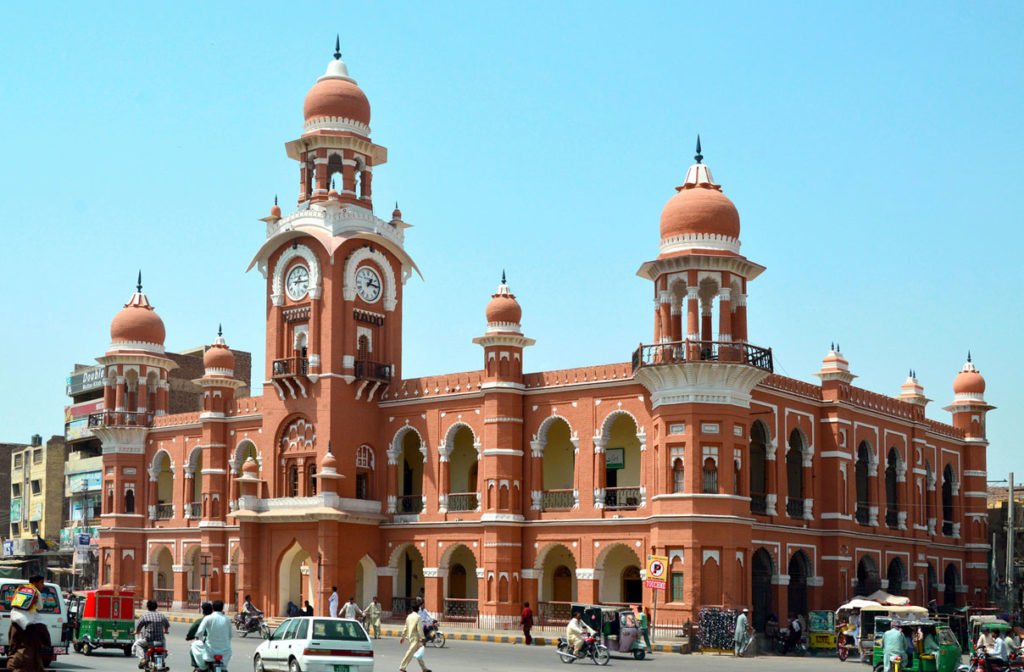
The famous Multan Clock Tower, also known as Ghanta Ghar, Multan is one of Multan’s main tourist attractions. It was built around 1884. British Indian Empire era. Construction of Ghanta Ghar’s construction began in February 1884 and took four years to build.
Interestingly, the foundation of Ghanta Ghar is based on the Haveli ruins of Ahmad Khan Sazai, which was destroyed during the siege of the Multan.
It used to be called Lipon Hall and Building, but it was called “Wing Hall” after independence. At first, the building was used for the purpose of office meetings and cultural programs.
If you want to see the hustle and bustle of the city, you need to visit Ghanta Ghar, Multan. Around Ghanta Ghar, there are small local shops selling traditional Murtani products such as Azirak and clay pottery.
Bibi Pak Daman Mausoleum
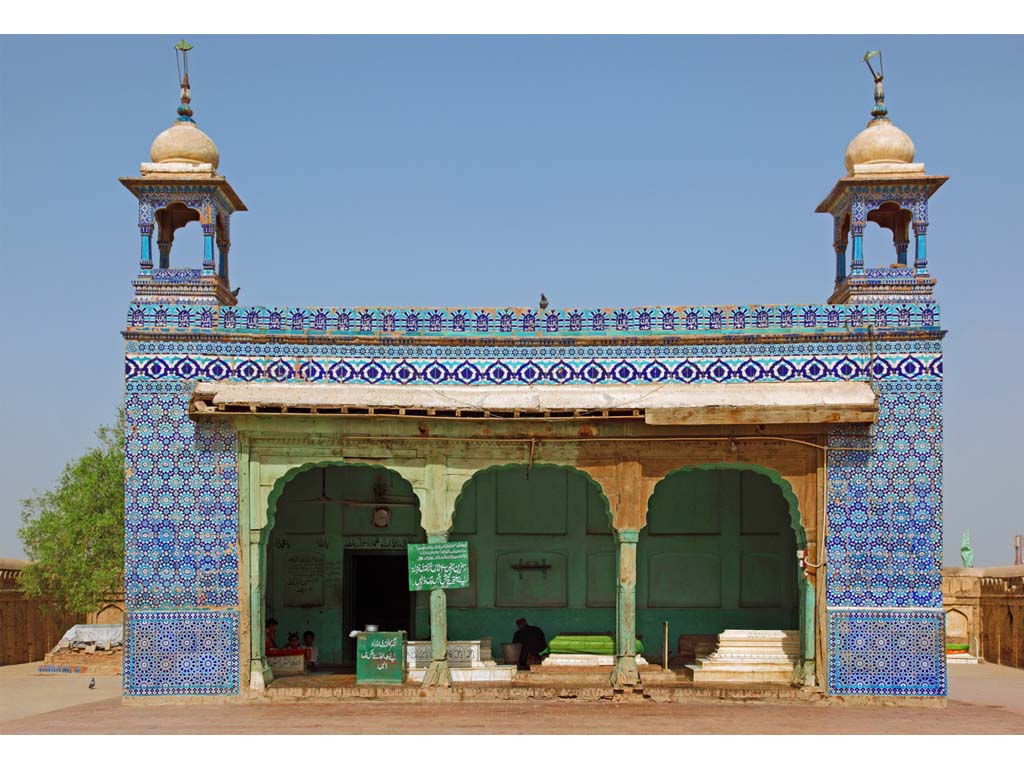
Bibi Pak Daman Mausoleum, well known as Bibi Rasti, was the mother of the famous Rukn E Alam. He is also a student of Bahaudin Zachariah and has done a lot of work to revive Islam in Multan.
She was buried near an ancient temple in Maitutra. The tomb has a rectangular shape and is heavily decorated with blue and white stones, which is Multan’s unique architectural style.
The eastern façade is decorated with a set of three arches above the double columns, providing access to a deep portico entrance with several tombs.
The tomb is in the middle of a thick fence on the wall. The tomb also has an arched entrance door.
Many people from Multan and the surrounding area come to pay tribute to the tomb.
Multan Arts Council
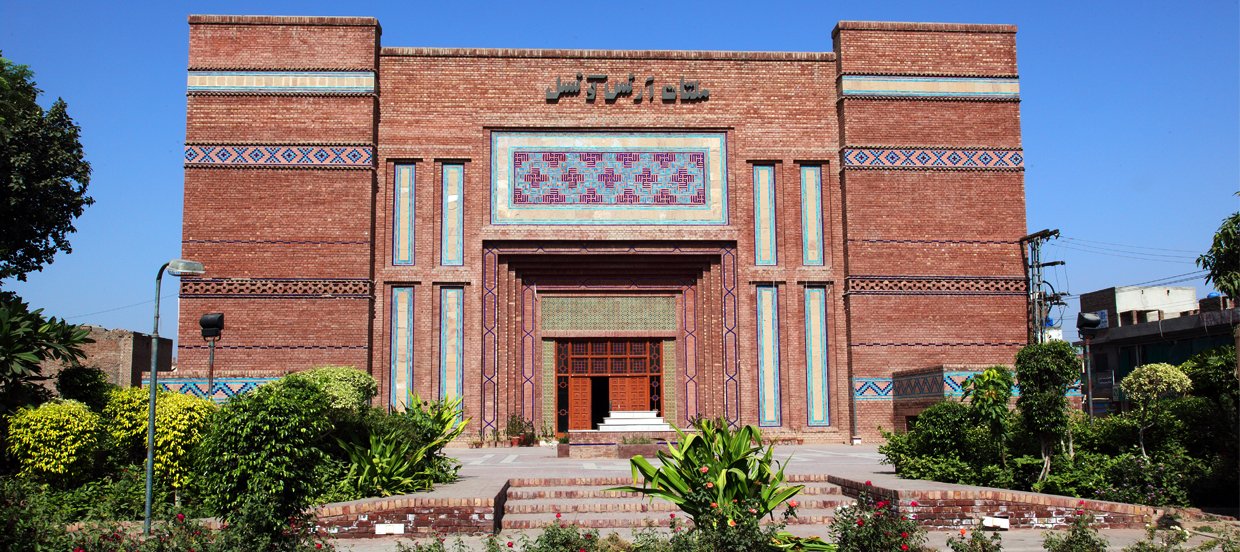
If you are an art lover and want to learn arts and crafts in different colors in Multan, then you must visit Multan Arts Council. The centre was established in 1975 and established in accordance with the legal provisions of the Punjab Arts Council (PUCAR) Lahore.
The centre is built on a large lot and consists of a room, an art gallery, a platform and a garden.
The council regularly holds art and performing arts exhibitions. The Majlis also organizes puppet shows, painting exhibitions, sculptures and other activities for the people of Multan and its surroundings.
Key events taking place at the Majlis include the 1st Sufism Festival, the Sadie Quarry Shezard Sculpture Exhibition, International Women’s Day 2009, the Japanese Calendar, Mela Rock, and Artistic Letters.
Every day, many pilgrims visit her shrine to pray from all over the country. These are some of the places worth visiting in Multan. If you want to see the true colors of Multan, you have to visit these places.
For more information on the real estate sector of the country, keep reading Feeta Blog.
5 popular historical places in Multan
- Published in ancient carriage, ancient chariot, Architectural Heritage, asian castles, asian history, castle, News
Graphic Designers Show What 6 Asian Castles Looked Like Before Falling Into Ruins
You definitely want to travel before this point, so the best we can do is offer you a way to discover something new and exciting without leaving your home. This time it is the largest and most populous continent, Asia, with its 45 million square kilometers of deserts, mountains, plateaus, plains and jungles that carry the history of ancient civilizations. Budget Direct has decided to digitally rebuild 6 castles that have become ruins over the years across five countries in Asia. The architectural wonders of Asia restore their former glory right before our eyes.
This is the newest project in the series of reconstructions by Budget Direct: the team has previously revived European castles, Ancient Wonders and UNESCO-protected heritage sites.
“In 2020, millions of people around the world will be stuck at home, and even in 2021, there are many travel restrictions still in place. To support those looking for inspiration on a travel chair, Budget Direct has decided to bring back some of the most awesome castles from all over Asia. The team started by making a long list of castles in Asia and then limited these to those that had resources available for us to digitally readjust.
They then chose the castles with the most architectural marvel from across the continent to rebuild. The team has been working with researchers, architects and digital designers to bring these ancient castles into the 21st century. ”
So sit back, relax, and start the virtual journey! And hopefully, you’ll find out something new along the way today.
Alamut Castle, Alamut Valley, Iran
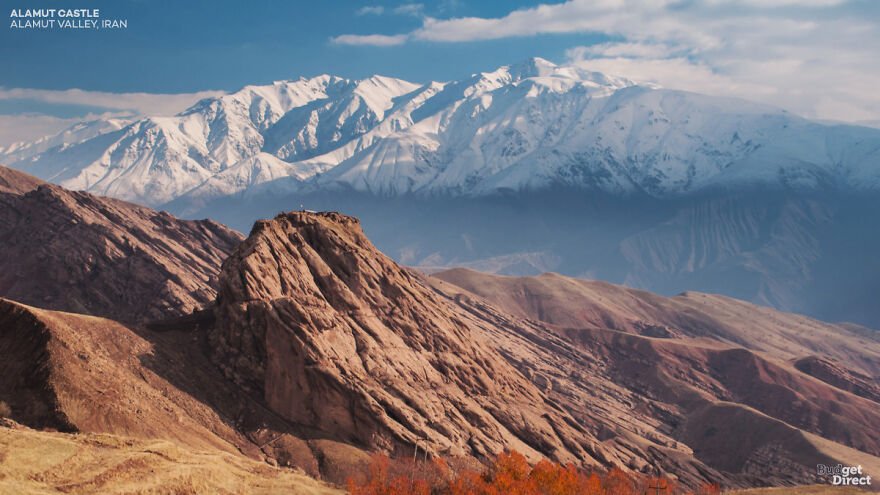
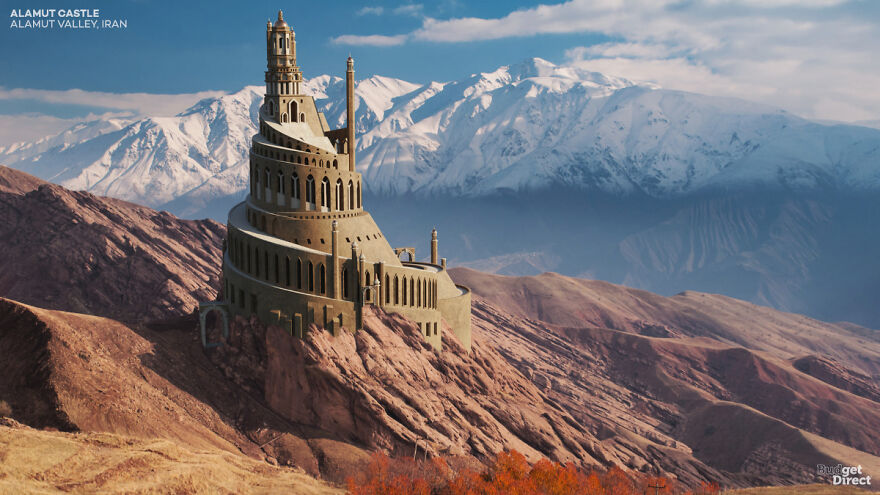
In 1090, Imam Hassan-i Sabbāh allegedly conquered the castle without shedding a drop of blood. The new state secured its power through targeted attacks on enemy leaders. Those who carried out these attacks were contemptuously called “Hashashin” (“tumultuous grass”), thus giving birth to the word “Assassin”. Ironically, Alamut’s fame caused its demise; its various conquerors demolished the castle while searching for a legendary assassin.
Alamut Rock is a popular day trek that offers a lookup view of the surrounding country. However, not much remains of Alamut Castle itself; its few surviving stone clouds are covered in scaffolding while the Iranian government tries to partially restore it for tourists.
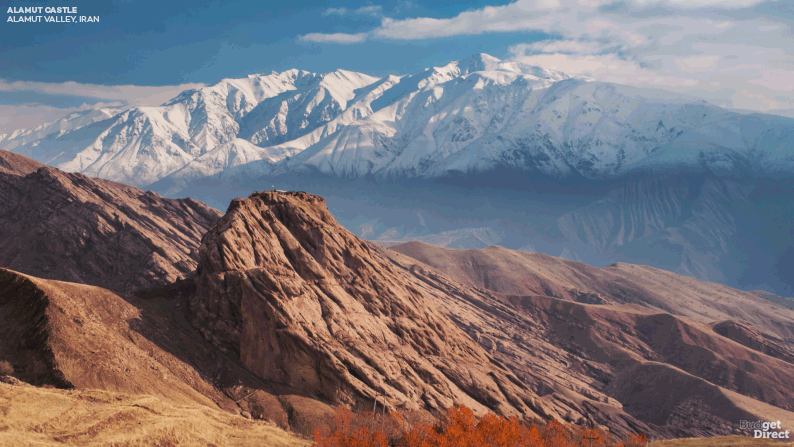
The Old Summer Palace, Beijing, China
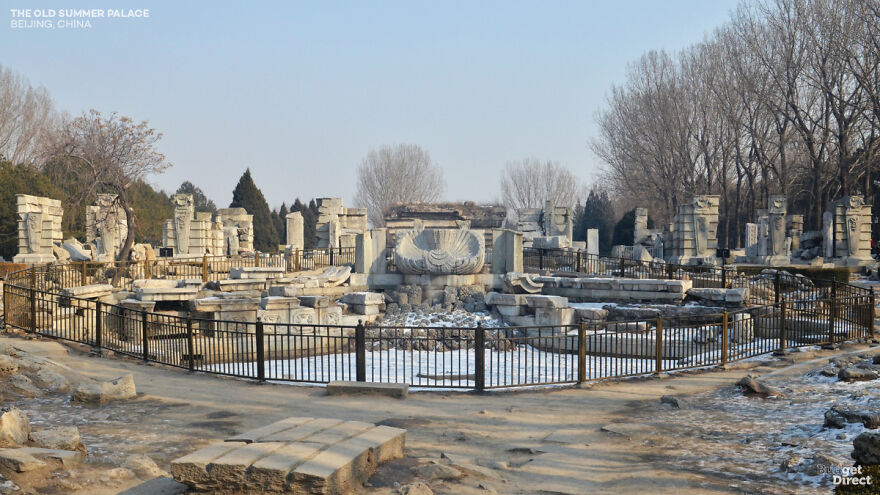
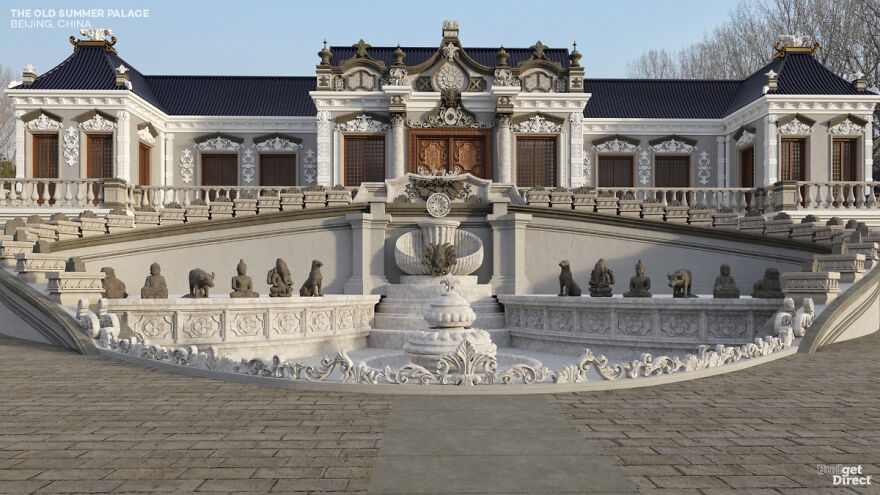
Yuanming Yuan – known in the Western World as the Old Summer Palace – was not a single building but a 3.5 square kilometer complex of palaces, lakes, gardens, towers and sculptures. The pride of the Qing dynasty, Yuanming Yuan, was largely destroyed by British and French troops in retaliation for the death of a British envoy during the Second Opium War. Further destruction occurred during the Boxer Rebellion and the Cultural Revolution.
We chose here to rebuild Haiyantang from the Yuanming Yuan (The Palace of Calm Seas). In front of a two-story Western-style palace, a water clock surrounded the 12 animals of the Chinese Zodiac. Today, the Martian ornament of the fountain sits within the contour of its former depression, backed by a spaced view of fallen palace columns.
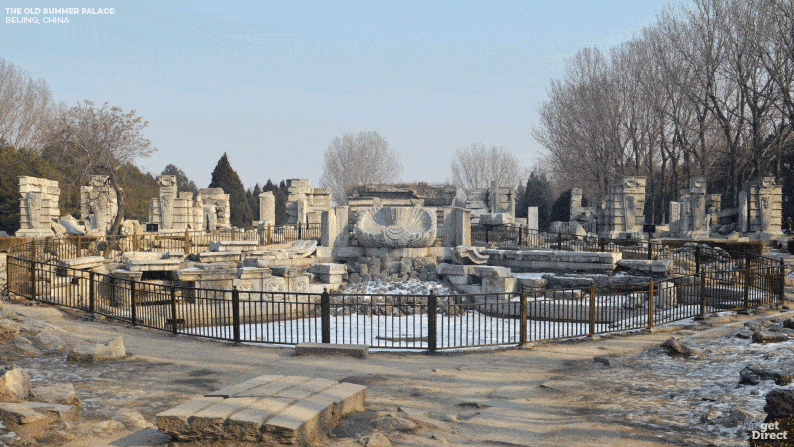
Hagi Castle, Hagi, Japan
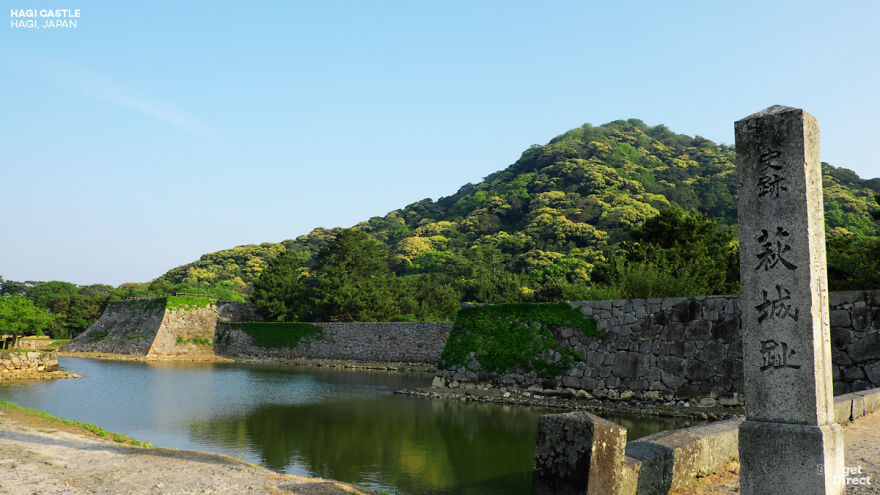
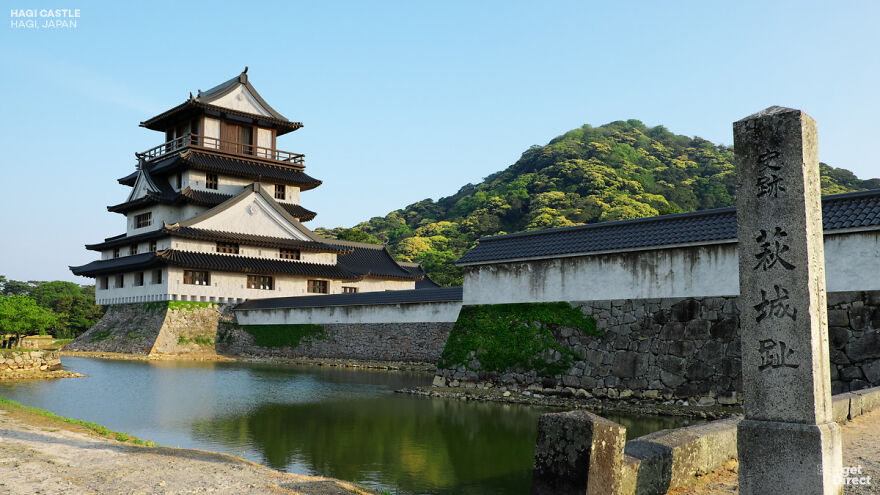
The Mōri Samurai clan lost to Tokugawa in the Battle of Sekigahara, and as a result, had to rebuild their capital in the small seaside town of Hagi. The Mōri got their revenge, however. The castle became the capital of the Chōshū Domain, which was instrumental in the final overthrow of the Tokugawa Shogunate. Ironically, the castle was dismantled by the new government in 1874 as part of a policy of centralization and modernization.
Hagi was very awesome at the time. Multiple galleries and walls protect the surrounding land, many of which are still visible. The main wooden fort has been dismantled, but its stone base and part of its moat stand. Higher up the mountain, the remains of a reserve fort can be found.
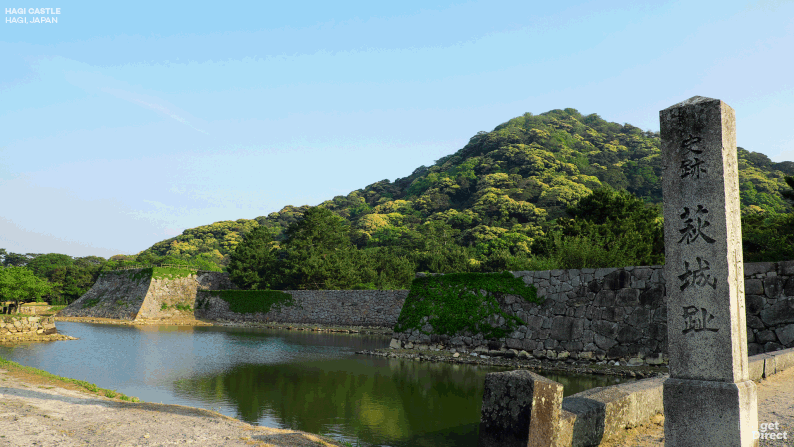
Ghazni Citadel, Ghazni, Afghanistan
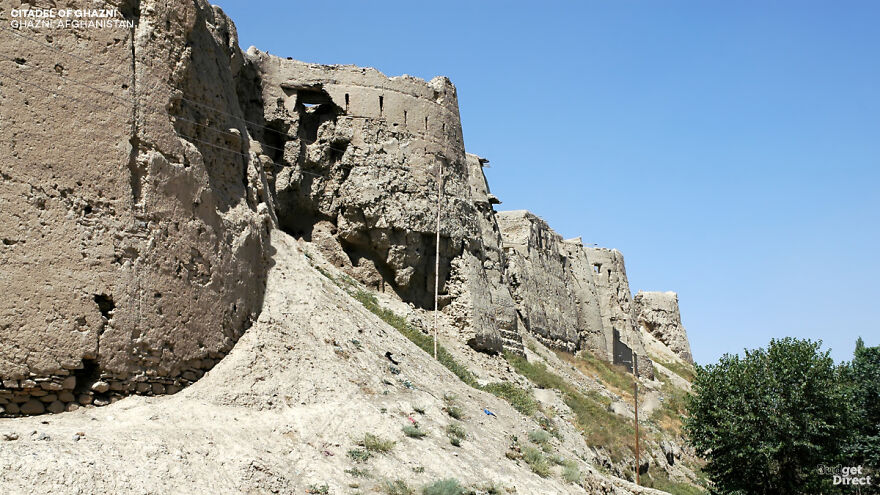
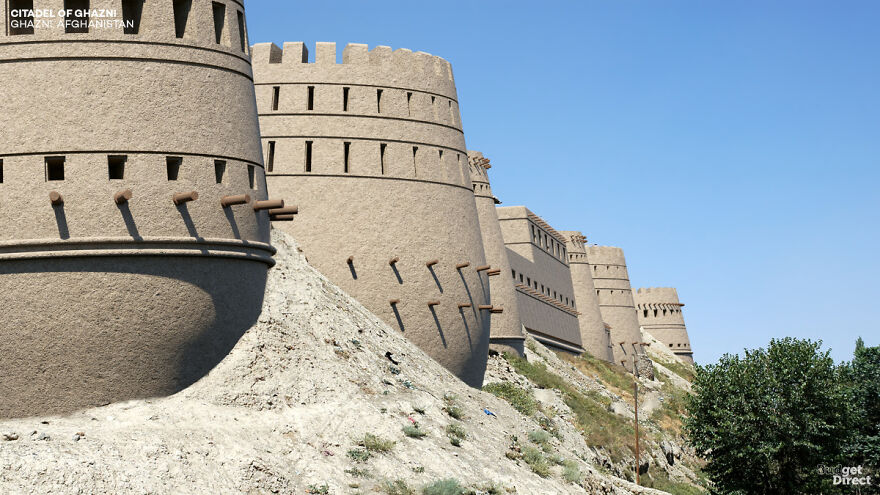
The former slave Sebüktigin received the governorship of Ghazni in 977, but he promptly rebelled against his ruling Iranian rulers to found the Ghazni Empire. Ghazni became the war point of Afghanistan, sought after by the VIP conquerors from the history of Timur (Tamerlane) to the Mongols. When the citadel was famously conquered by the British in 1839, Afghan leadership had to flee Kabul. It was also used as a U.S. military base after 2001.
The remains of the citadel rest on a central hill above the walled city. However, neglect, war and weather severely damaged Ghazni. 14 of its original 32 towers have collapsed, one recently as 2019. Today, Ghazni’s walls, towers and citadel are in danger of being lost permanently to the weather winds.
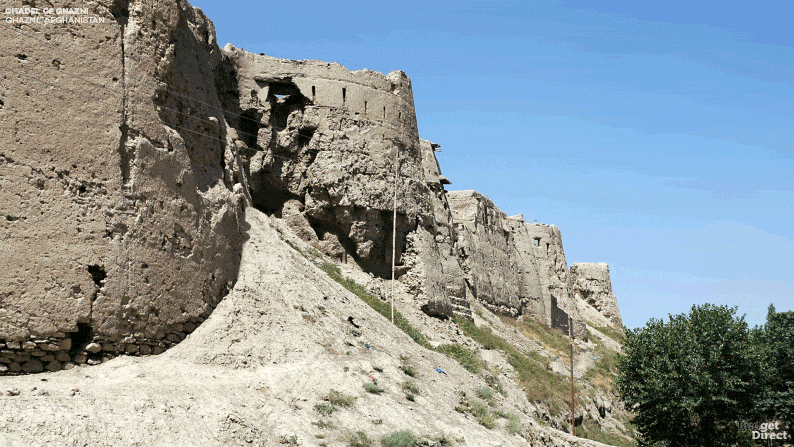
Raigad Fort, Raigad, Maharashtra, India
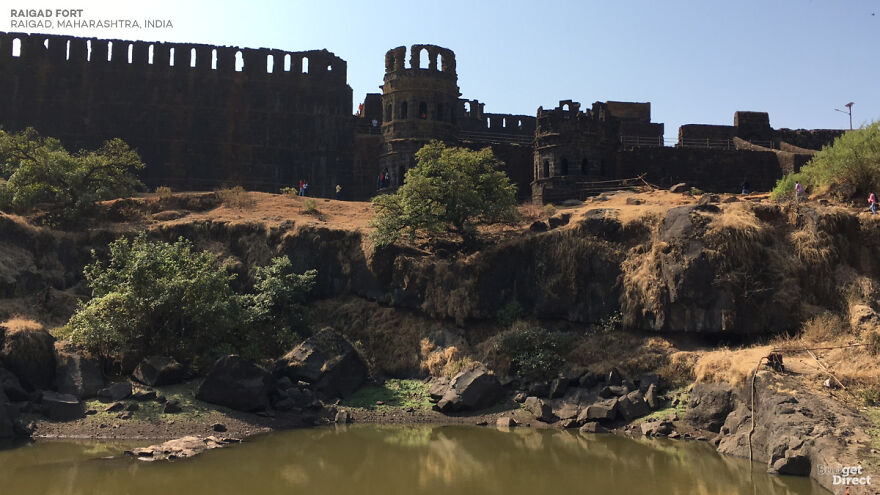
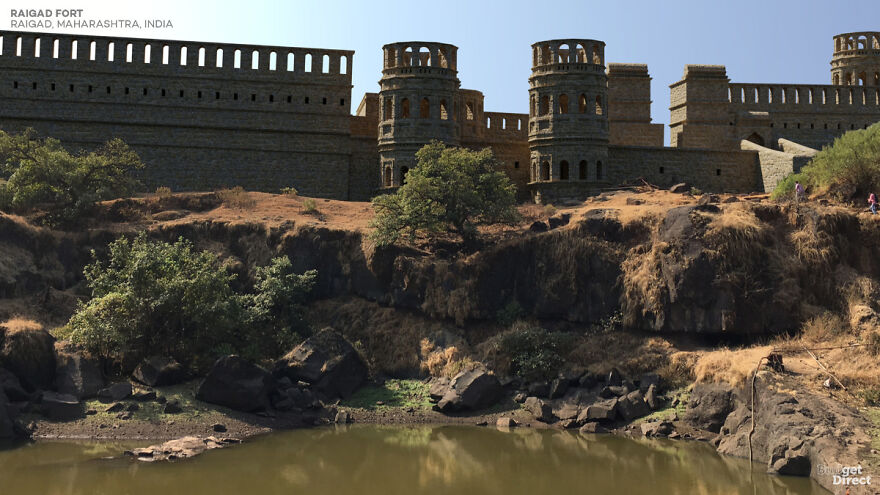
Although parts of the structure date from 1030 AD, the already imposing fortifications of Raigad were expanded by Shivaji Maharaj. Shivaji was crowned Chhatrapati (“Umbrella Lord”) here in 1674, establishing the Marathan Confederacy as opposed to the Mughal Empire. The Confederacy ruled Raigad until its destruction by the British East India Company in 1818.
The main entrance to the castle is 820 meters above sea level – a climb of 1737 steps. (Luckily now there is an aerial tramway.) Visitors can still look at the remains of two of the three watchtowers, several reservoirs, stone trading booths and a famous wall called Hirakani Buruj.
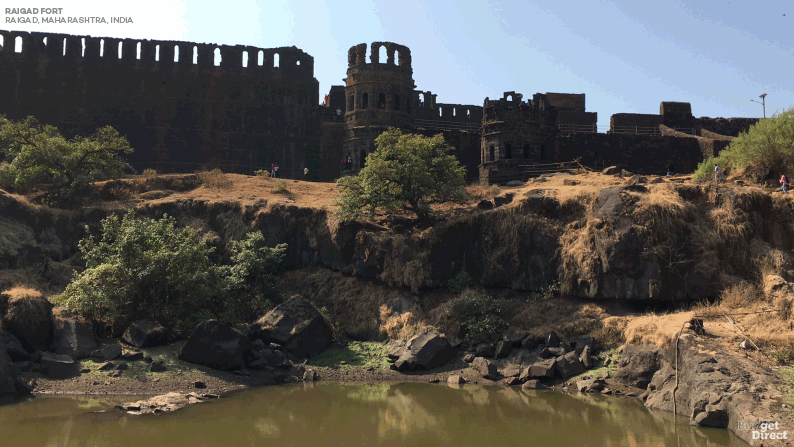
Takeda Castle, Asago, Hyogo, Japan
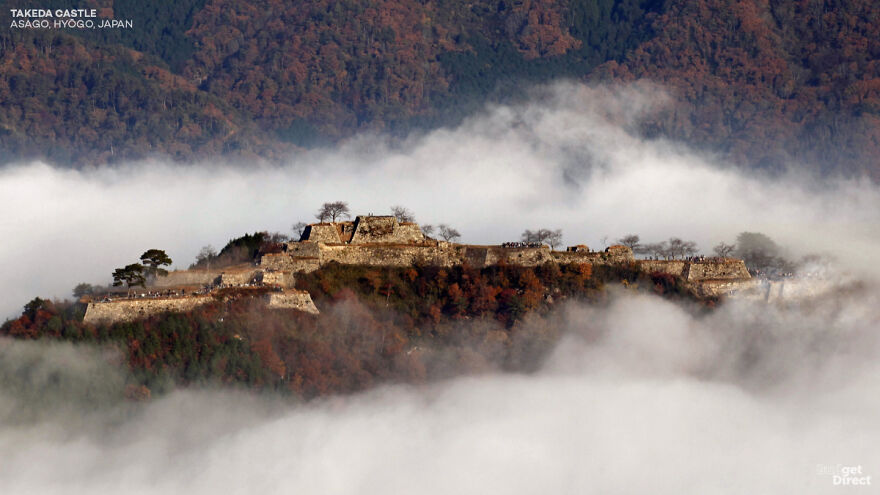
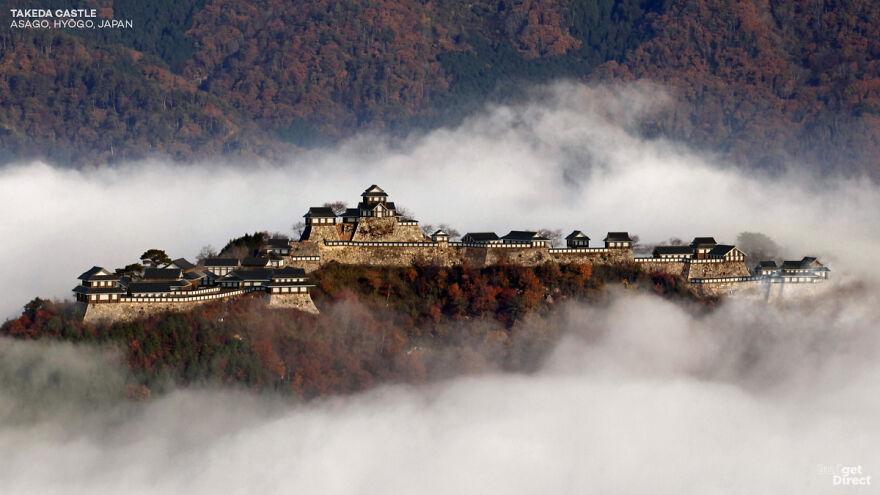
Takeda was built in the 15th century by “the Red Monaco” – a man partly responsible for plunging Japan into the century of chaos known as the Sengoku period. The fort was later conquered by Toyotomi Hideyoshi during a reunion. After Hideyoshi’s death, the new shogun Tokugawa Ieyasu accused the final lord of the castle of arson during a pivotal battle. From here Takeda decayed.
Today the ruins of the castle sit 353 meters above sea level. Although no buildings remain standing on the mountain itself, a row of temples has survived at the base. The stone foundations of the castle are well preserved, having undergone minor restorations in the late twentieth century. Due to a seasonal fog that fills the valley, some mornings Takeda seems to float above the clouds.
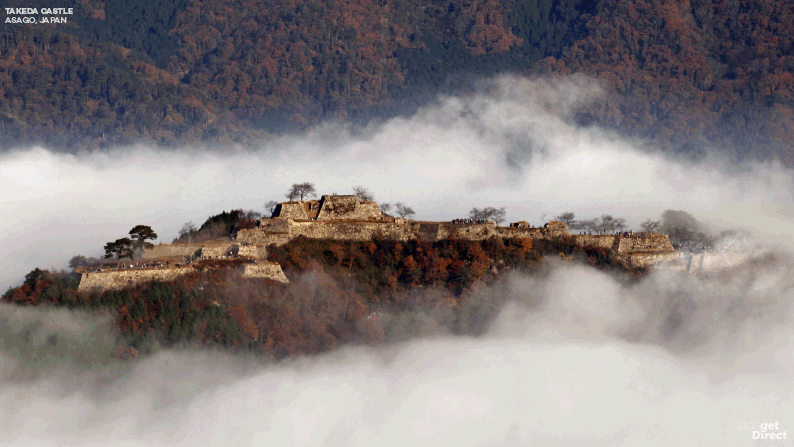
Watch this space for more information on that. Stay tuned to Feeta Blog for the latest updates about Architrcture, Lifestyle and Interior Design.
Graphic Designers Show What 6 Asian Castles Looked Like Before Falling Into Ruins
- Published in Architectural Heritage, architectural wonders, Architecture, Asia, asian castles, asian history, Budget Direct, castles in asia, castles reconstructed, culture, digital art, full-page, Graphic Design, heritage, History, Homepage featured, ruined castles rebuilt, ruined castles restored, ruined catles, travel, travel destinations, travel destinations in asia

